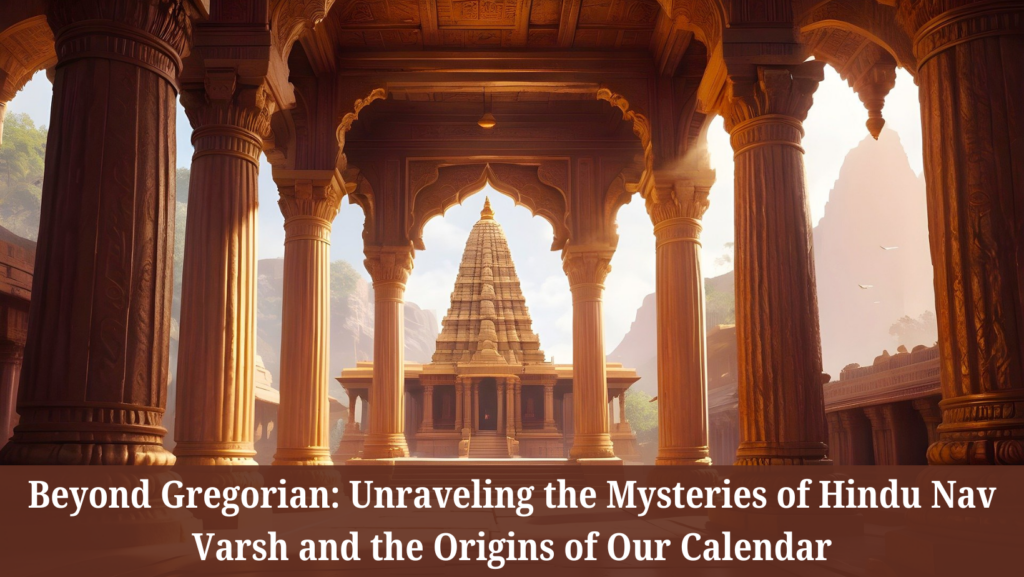We often celebrate the new year on January 1st, a date ingrained in our minds as the start of a fresh chapter. However, did you know that this date is a relatively recent phenomenon? And more importantly, did you know that according to the ancient Vedic calendar, the Hindu New Year (Nav Varsh) actually begins in the month of Chaitra?
The Gregorian Calendar: A Historical Perspective

The Gregorian calendar, the one we predominantly use today, has a rich and fascinating history. Its origins can be traced back to the Julian calendar, which was itself based on the Roman calendar. Over time, adjustments were made to align the calendar more accurately with the Earth’s orbit around the sun.
The Curious Case of Month Lengths
Have you ever wondered why some months have 31 days, while others have 30? And why does February, the shortest month, have only 28 days (or 29 in a leap year)?
The lengths of months in the Gregorian calendar are a result of a complex interplay of historical and astronomical factors. Julius Caesar, when reforming the Roman calendar, attempted to create a more symmetrical system, but certain adjustments were made later to accommodate various astronomical observations.
The Enigma of February
February’s unique status as the shortest month is a remnant of Roman history. In the early Roman calendar, February was the final month of the year. When Julius Caesar introduced his reforms, he added two months to the calendar – July (named after himself) and August (named after Augustus Caesar).
To maintain some balance, a day was subtracted from February and added to August. This is why February typically has 28 days.
Leap Years: A Necessary Adjustment
The Earth’s orbit around the sun isn’t perfectly circular. It’s slightly elliptical, which means the time it takes to complete one orbit varies slightly. To account for this discrepancy, an extra day (February 29th) is added to the calendar every four years, creating a leap year.
Celebrating the New Year: A Sanatana Dharma Perspective

From a Sanatana Dharma perspective, the new year aligns with the natural cycles of the cosmos. The Chaitra month, which typically falls in March/April, marks the beginning of spring, a time of renewal and growth.
Celebrating the new year according to the Vedic calendar offers a deeper connection to the natural rhythms of the universe and provides an opportunity for introspection and spiritual rejuvenation.
Conclusion
Understanding the origins of our calendar systems, both Gregorian and Vedic, provides valuable insights into our history, culture, and our place within the cosmos. While the Gregorian calendar dominates our modern lives, exploring the significance of Hindu Nav Varsh offers a unique perspective on time and the cyclical nature of existence.
Disclaimer: This blog post is for informational purposes only and does not constitute religious or astrological advice.
I hope this blog post provides a unique and insightful perspective on the fascinating world of calendars!







